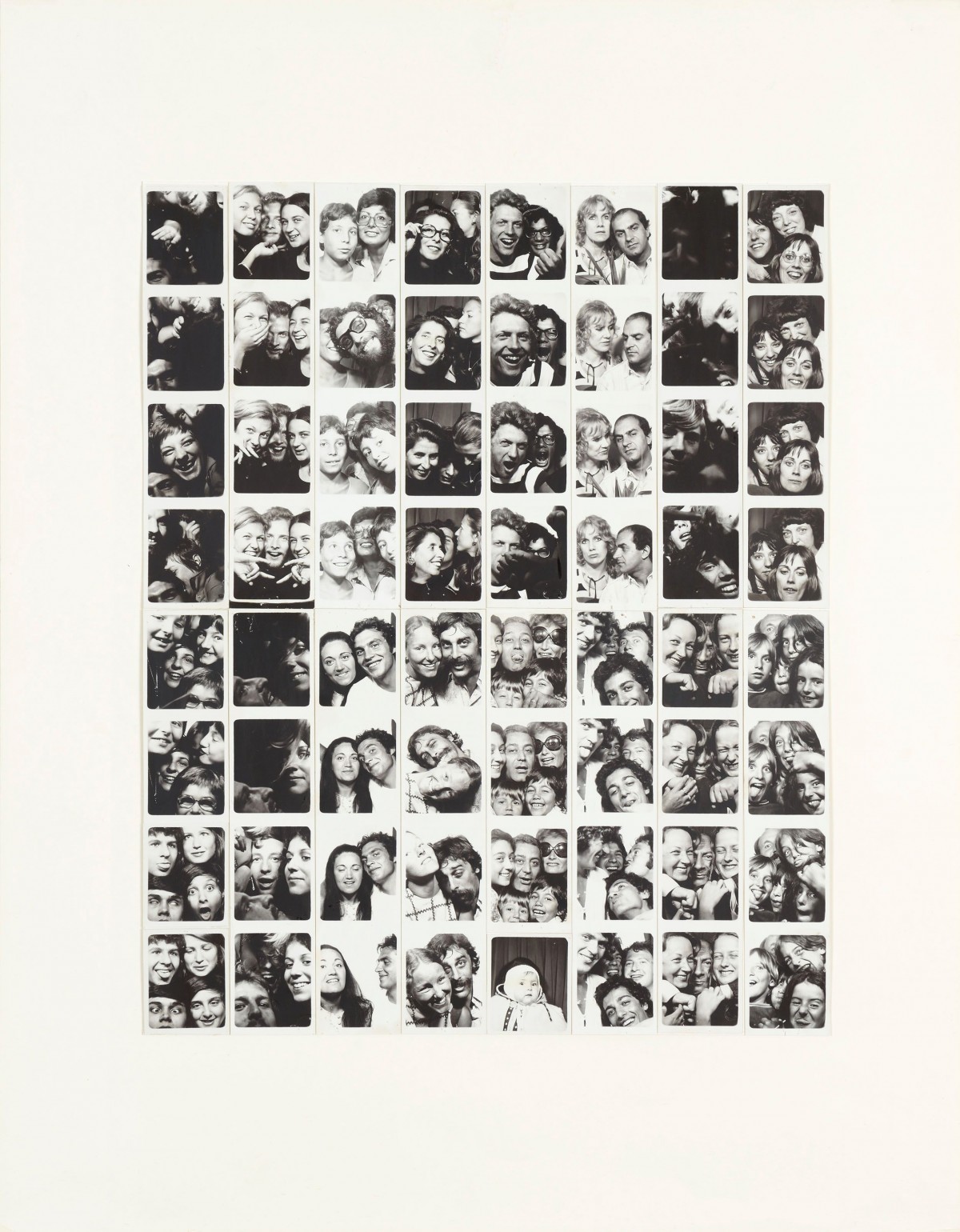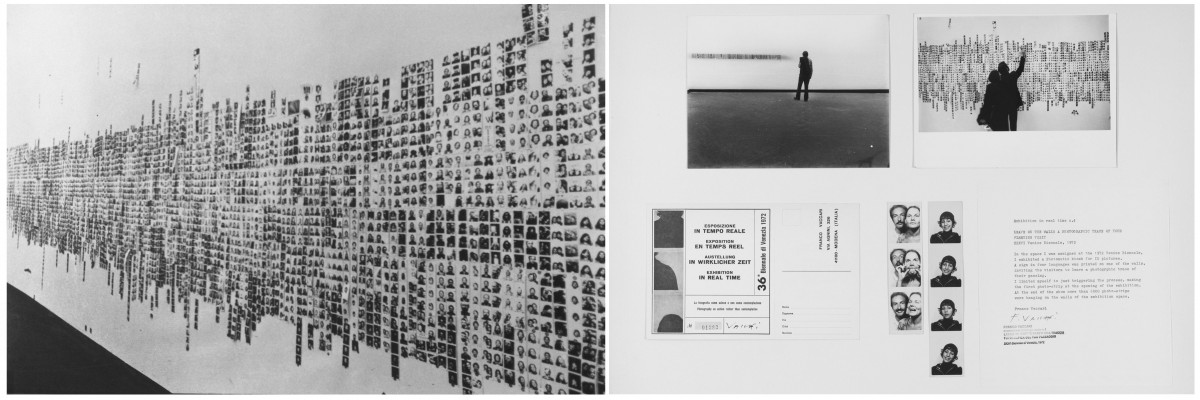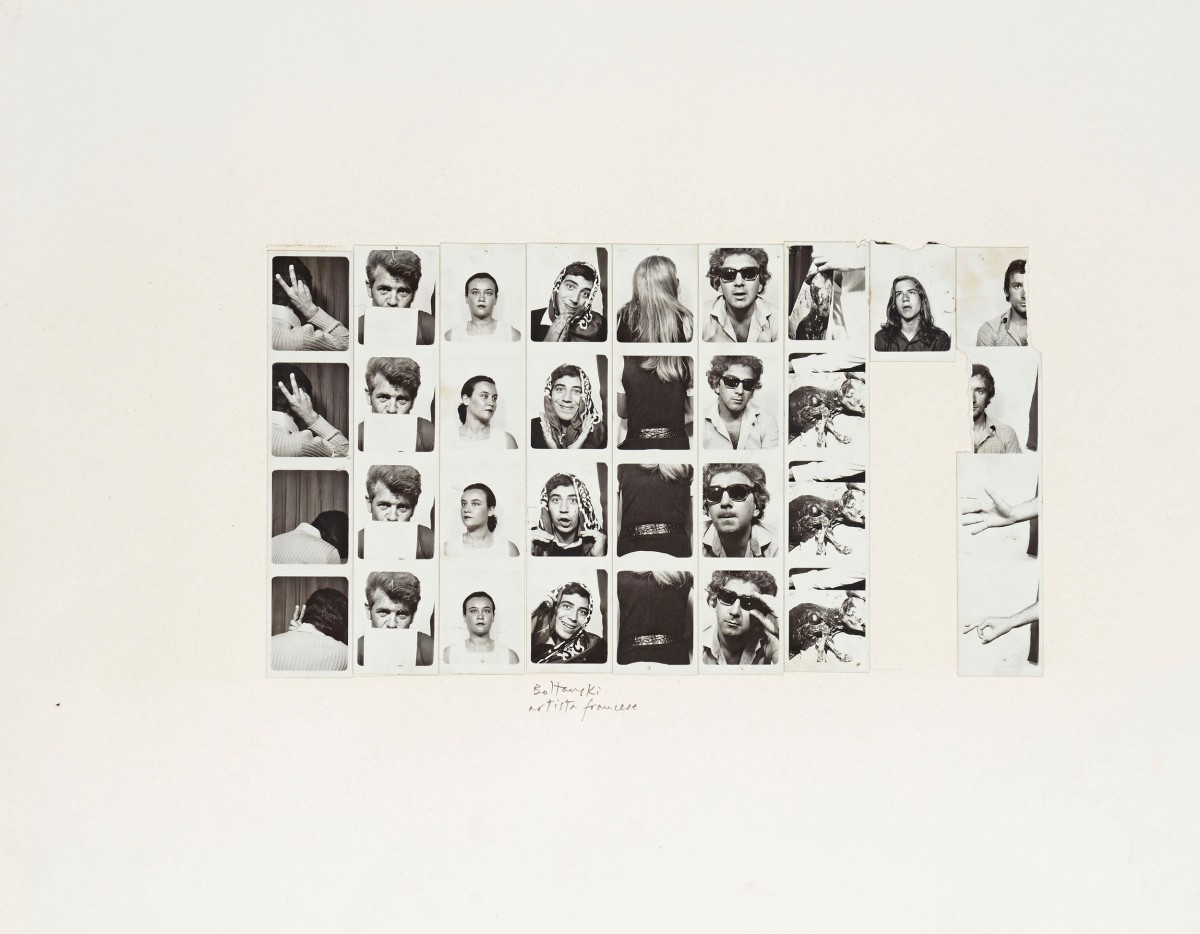Somehow many have heard of that one exhibition. But then if someone asks "Who was the artist who did that photobooth thing in Venice in the seventies?" most photo enthusiasts would show blank faces. The name is Franco Vaccari, and he did much more than that photobooth thing.
Unfortunately I didn’t see the exhibition at the Venice biennale in 1972. It was one of the artist’s first ‘exhibitions in real time’. When the exhibition at the Italian pavilion opened, there was nothing in the gallery but a photobooth machine and one sentence written at the wall in four languages: ‘Leave on the walls a photographic trace of your fleeting visit’. When the exhibition closed the walls were covered with black and white photobooth strips, the gallery had turned into a collective portrait of its visitors. The installation photos look spectacular.
I learned about Franco Vaccari‘s work through a catalogue I received when I edited a small magazine about photography in the nineteen-eighties. It’s a modest catalogue, published on the occasion of an exhibition at the Museum of Modern Art in Vienna twelve years after the Venice show; layout and typography are clumsy, the printing is poor on the type of paper that was the affordable standard at the time. Despite all these flaws it’s one of the catalogues that survived continuous decades of sifting and disposal of printed matter. Thus I learned that books easily endure bad printing if they convey interesting ideas.
In the realm of conceptual photography Franco Vaccari produced quite a number of interesting ideas. What I love about them is that his ideas are clear, simple and intelligent without being clever. His exhibitions are conceived for specific situations, the act of making them is more important than the resulting work, and often there’s not more left after an exhibition than a few installation photos. He’s not the type of artist who produces commodities but someone who contributes questions. He made an impressive number of books, both as a visual artist and as a writer. Writing is as important for him as the photographic work, and from the few things I read I dare say it’s a shame that only a small portion of his writing has been translated.
This was the state of things little more than a year ago, and without one of those nice coincidences that make life so exciting it could still be the state of things. But then a museum in Italy arranged a show of my work and in preparing this we talked about writers whom we might want to ask to contribute texts for the catalogue. When the curator suggested Franco Vaccari I agreed before she was able to finish her sentence.
Franco Vaccari was happy to contribute a text, and in this text he coined a term I am envious of: Lumpenfotografie (derived from Karl Marx’ Lumpenproletariat). A few months later this became the title of the first exhibition that included work by the two of us. The curator of this exhibition introduced me to Franco Vaccari’s philosophy: The artist was born and lives in Modena. The region is known not only for the vinegar it produces but also for its pork. For good reasons, people are subscribed to the idea that you don’t kill a pig for its fillet. You eat the entire animal. Black pudding deserves the same attention as tenderloin. With photography it’s the same. It doesn’t make sense only to look at the highlights, you need to look at everything.
It goes without saying that you shouldn’t miss the highlights, and in my point of view Franco Vaccari’s work is one of them.




